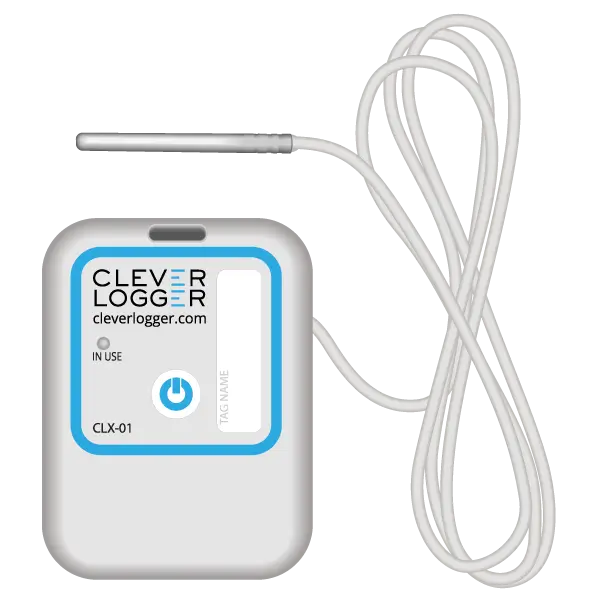Propylene Glycol 100% MSDS
Propylene Glycol Material Safety Data Sheet (MSDS)
Section 1 - Chemical Product and Company Identification
MSDS Name: Propylene glycol
Synonyms: 1,2-Dihydroxypropane; Methylethylene glycol; Monopropylene glycol; 1,2-Propylene glycol; 1,2-Propanediol; 2-Hydroxypropanol.
Company Identification:
OnSolution Pty Ltd, 38/5 Anella Ave, Catle Hill NSW 2154
For information, call: 02 9614 6417
Section 2 - Composition, Information on Ingredients
Propolyne Glycol >99%
Section 3 - Hazards Identification
EMERGENCY OVERVIEW
Appearance: colourless viscous liquid.
Caution! May cause eye, skin, and respiratory tract irritation. Hygroscopic (absorbs moisture from the air).
Target Organs: Central nervous system.
Potential Health Effects
Eye: May cause slight transient injury.
Skin: May be absorbed through damaged or abraded skin in harmful amounts. Allergic reactions have been reported. A single prolonged skin exposure is not likely to result in the material being absorbed in harmful amounts. Prolonged contact is essentially non-irritating to skin. Repeated exposures may cause problems. Negative results have consistently been obtained in guinea pigs studies for sensitization. 1,2-Propylene glycol is not considered an occupational skin sensitizer.
Ingestion: May cause gastrointestinal irritation with nausea, vomiting and diarrhea. Low hazard for usual industrial handling. May cause hemoglobinuric nephrosis. May cause changes in surface EEG.
Inhalation: Low hazard for usual industrial handling. Inhalation of a mist of this material may cause respiratory tract irritation. Material has a low vapor pressure at room temperature, so exposure to vapor is not likely.
Chronic: Exposure to large doses may cause central nervous system depression. Chronic ingestion may cause lactic acidosis and possible seizures. Exposures to propylene glycol having no adverse effects on the mother should have no effect on the foetus. Birth defects are unlikely. In animal studies, propylene glycol has been shown not to interfere with reproduction.
Section 4 - First Aid Measures
Eyes: In case of contact, immediately flush eyes with plenty of water for a t least 15 minutes. Get medical aid.
Skin: In case of contact, flush skin with plenty of water. Remove contaminated clothing and shoes. Get medical aid if irritation develops and persists. Wash clothing before reuse.
Ingestion: If swallowed, do not induce vomiting unless directed to do so by medical personnel. Never give anything by mouth to an unconscious person. Get medical aid.
Inhalation: If inhaled, remove to fresh air. If not breathing, give artificial respiration. If breathing is difficult, give oxygen. Get medical aid.
Notes to Physician: Persons with impaired kidney function may be more susceptible to the effects of this substance. Treat symptomatically and supportively.
Section 5 - Fire Fighting Measures
General Information: As in any fire, wear a self-contained breathing apparatus in pressure-demand, MSHA/NIOSH (approved or equivalent), and full protective gear. During a fire, irritating and highly toxic gases may be generated by thermal decomposition or combustion.
Extinguishing Media: Use water spray, dry chemical, carbon dioxide, or alcohol-resistant foam.
Flash Point: 99 deg C ( 210.20 deg F)
Autoignition Temperature: 371 deg C ( 699.80 deg F)
Explosion Limits: Lower: 2.6 vol % Upper: 12.6 vol %
NFPA Rating: (estimated) Health: 0; Flammability: 1; Instability: 0
Section 6 - Accidental Release Measures
General Information: Use proper personal protective equipment as indicated in Section 8.
Spills/Leaks: Absorb spill with inert material (e.g. vermiculite, sand or earth), then place in suitable container. Clean up spills immediately, observing precautions in the Protective Equipment section. Provide ventilation.
Section 7 - Handling and Storage
Handling: Wash thoroughly after handling. Remove contaminated clothing and wash before reuse. Use with adequate ventilation. Avoid contact with eyes, skin, and clothing. Keep container tightly closed. Avoid ingestion and inhalation.
Storage: Store in a tightly closed container. Store in a cool, dry, well-ventilated area away from incompatible substances. Store protected from moisture.
Section 8 - Exposure Controls, Personal Protection
Engineering Controls: Facilities storing or utilizing this material should be equipped with an eyewash facility and a safety shower. Use adequate ventilation to keep airborne concentrations low.
Exposure Limits: ACGIH: none listed. NIOSH: none listed. OSHA – Final PELs: none listed.
OSHA Vacated PELs: Propylene glycol: No OSHA Vacated PELs are listed for this chemical.
Personal Protective Equipment
Eyes: Wear appropriate protective eyeglasses or chemical safety goggles as described by OSHA’s eye and face protection regulations in 29 CFR 1910.133 or European Standard EN166.
Skin: Wear appropriate protective gloves to prevent skin exposure.
Clothing: Wear appropriate protective clothing to prevent skin exposure.
Respirators: A respiratory protection program that meets OSHA’s 29 CFR 1910.134 and ANSI Z88.2 requirements or European Standard EN 149 must be followed whenever workplace conditions warrant respirator use.
Section 9 - Physical and Chemical Properties
Physical State: Liquid
Appearance: Colourless viscous
Odour: Odourless
pH: 7.5 to 8.5 (1% in water)
Vapor Pressure: 0.08 mm Hg @ 20 deg C
Vapor Density: 2.62 (air=1)
Viscosity: 58.1 cps @ 20°C
Boiling Point: 187°C
Freezing/Melting Point: -60°C
Solubility: Soluble.
Specific Gravity/Density: 1.030 g/ml
Molecular Formula: C3H8O2
Molecular Weight: 76.09
Section 10 - Stability and Reactivity
Chemical Stability: Stable under normal temperatures and pressures. Hygroscopic: absorbs moisture or water from the air.
Conditions to Avoid: Excess heat, moist air.
Incompatibilities with Other Materials: Strong oxidizing agents.
Hazardous Decomposition Products: Carbon monoxide, carbon dioxide, aldehydes.
Hazardous Polymerization: Will not occur.
Section 11 - Toxicological Information
No adverse health effects expected if the product is handled in accordance with this Safety Data Sheet and the product
label. Symptoms or effects that may arise if the product is mishandled and overexposure occurs are:
Ingestion: No adverse effects expected, however, large amounts may cause nausea and
vomiting.
Eye contact: May be an eye irritant.
Skin contact: Not irritating to the skin.
Inhalation: Breathing in vapour may produce respiratory irritation.
Long Term Effects: Non-carcinogenic based on animal studies. Non-mutagenic. No reproductive or developmental effects. Cats given high doses of MPG in diet showed a decrease in red blood cell survival.
Toxicological Data: Oral LD50 (rat): >5000 mg/kg
Section 12 - Ecological Information
Ecotoxicity: Avoid contaminating waterways.
Persistence/degradability and mobility: The material is readily biodegradable.
Section 13 - Disposal Considerations
Disposal methods: Refer to local government authority for disposal recommendations. Material can be recycled. Waste material should be combined with an inert material such as sawdust to form a stable sludge which can then be disposed of at a licensed hazardous waste landfill.
Section 14 - Transport Information
Road and Rail Transport
Not classified as Dangerous Goods by the criteria of the Australian Dangerous Goods Code (ADG Code) for transport by Road and Rail; NON-DANGEROUS GOODS.
Marine Transport
Not classified as Dangerous Goods by the criteria of the International Maritime Dangerous Goods Code (IMDG Code) for
transport by sea; NON-DANGEROUS GOODS.
Air Transport
Not classified as Dangerous Goods by the criteria of the International Air Transport Association (IATA) Dangerous Goods
Regulations for transport by air; NON-DANGEROUS GOODS.
Section 15 - Regulatory Information
Classification: Based on available information, not classified as hazardous according to criteria of Safe Work Australia; NON-HAZARDOUS SUBSTANCE.
Poisons Schedule: None allocated.
This material is listed on the Australian Inventory of Chemical Substances (AICS).
Section 16 - Additional Information
This MSDS summarises to our best knowledge at the date of issue, the chemical health and safety hazards of the material and general guidance on how to safely handle the material in the workplace. Since OnSolution cannot anticipate or control the conditions under which the product may be used, each user must, prior to usage, assess and control the risks arising from its use of the material.







